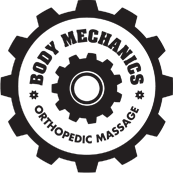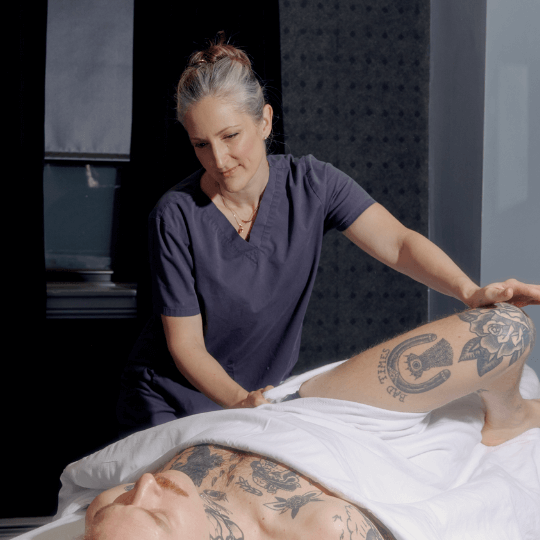Massage in New York: Doors open to a Dangerous Act
Getting a massage in New York might be one of the more dangerous things you do with your life. Coming out of the Ontario massage program where massage is firmly entrenched as a full health care position that requires 2200 hours of schooling, I was, and continue to be, horrified with massage in New York. I want to stress that this is not ALL massage in New York, but the problem is it is such a mixed bag that you can’t really trust any massage in New York. Before we enumerate why there are issues, I want to share some of my experiences working and hiring in New York City.
I have worked in some of New York City’s best spas and medical massage locations and now I own my own clinic. Along the way I have met and worked with many therapists in the city. While a good many of them are competent at what they do, a large majority of them do not know the muscles of the body, do not know general red flags, treat beyond scope, treat dangerously within scope, diagnose, pathologize, and in general have some really weird ideas about what massage does and does not do. I have had therapist do high grade mobilizations in interviews, had them confess no one explained referral pain to them, that they did not know what muscle group the adductors was, that they are cleansing me, that they don’t know how to tell if something is acute or chronic, and a host of other nasties. In general, even those who are competent still have some strange thoughts on treatment, assessment, and scope of practice. Strange since New York has 1000 hrs of education. So where is it going? And what is happening?
First lets start of with what a scope of practice is:
New York State defines massage therapy as:
The practice of the profession of massage therapy is defined as engaging in applying a scientific system of activity to the muscular structure of the human body by means of stroking, kneading, tapping and vibrating with the hands or vibrators for the purpose of improving muscle tone and circulation.
A huge problem they have is their scope of practice. In looking at the above, it would be hard to stay in scope at all since the information provided makes no mention of movement, tendons, ligaments, and the nervous system, to which all of the muscles are connected. It makes no mention of stretching or movement, or home care. The scope also mentions that it is the ‘scientific’ application of massage, however a large portion of any of the New York schools curriculum might actually be made up of Eastern studies, energy work, and quackery. To further complicate things, while it outlines that massage might use stroking, kneading, tapping and vibrating (all well and good) it says that those techniques should be used to improve muscle tone and circulation, which is fairly impossible. I can no more improve muscle tone and circulation(with a few localized exceptions) with massage than I can levitate. If you want improved muscle tone and circulation you should get some exercise. This leaves New York massage in a state where massage therapists are being taught essentially whatever the person teaching them was taught…and that is one giant game of telephone and degraded science, or non-science as the case may be.
In 2010, after sitting the board test here in New York and realizing how different the US and Canadian programs were I wrote this letter to New York State:
“I am not sure if you remember me but I contacted you some two years ago while trying to bring my Ontario, Canada, credentials to NY. …
The reason I am writing, however, is that after working here for some time, I have really had the ability to compare the two standards and see the difference. I wanted to know if there is not some way to get involved with decision making processes about where massage as an industry is going in New York. Healthcare, especially alternative health care, looks to be a booming future industry. After working here, though, I have some concerns about where things are headed. I have met new grads, at very prominent spas who don’t know their anatomy. It concerns me that a therapist can make a decision to work on the arm rather than the JT sprain (that the client complained about) that clearly needs ice or mobilization because it “feels” energetically right’. I find the whole thing dangerous.”
Since then I have become increasingly concerned that the situation is far worse than it seemed at the time.
Even if we ignore the glaring problems with the scope, the inclusion of the eastern education in the standard has opened the doors to a variety of very dangerous problems. For those of you who do not know how eastern or shiatsu massage works, the actual techniques themselves are simple, it’s a combination of touching and stretching. The way the massage is directed is through an assessment just as a science-based massage would have. The difference being that a shiatsu assessment uses the five element theory to figure out where you have an energy imbalance. The five elements are:METAL (lung, large intestine) WATER (kidney, bladder) WOOD (liver, gallbladder) FIRE (heart, small intestine, pericardium, small intestine) and EARTH (spleen, stomach).
It would take into consideration things such as: when you woke from sleep at night , if your eyes are dry, and your emotional state, and then the practitioner would decide based on the element theory and intuition from that information where your imbalance is and treat the energy line that is associated with it. The problem is, however, that is essentially diagnosing someone. It is completely out of the scope of a massage therapist to diagnose anything. Additionally, because the elements represent internal organs, it leads therapists into believing it’s within their scope to treat them. It is not. A therapist has no business commenting, suggesting or working with your kidney, bladder or heart. (unless it’s to say get thee to a doctor)
All of those elements also have emotional states. Wood is anger, Fire is joy, metal is grief and Earth is worry. As a theory perhaps it is fine alone, but it opens therapists up to the idea that they should be asking you about your emotions. Massage therapists are not psychologists. They have no business talking to you about your emotional state in any way, shape or form as part of an assessment, or as part of a treatment, other than to refer you out or if a client offers it voluntarily.
It also encourages massage therapists to overlook red flags for treatment because in the context of an Eastern massage, red flags could easily be ignored as its part of the symptoms picture of a specific ‘energy line’ imbalance. As an example someone waking at night in pain (possible sign of cancer) might be looked over as a significant problem because the therapist is so interested to find out ‘what time’ they woke and diagnose it as an imbalance. Or a patient might express grief over a loss of a family member, but rather than get referred out, the therapist might treat it as an imbalance.
To make matters worse, you, as a consumer really have no choice in the matter. While you, the patient, should have a choice in how you are treated, because this is part of the core education, for most therapists it’s hard for them to separate the science from the fiction. You may only want medical massage but in the context of New York State it would be just as valid for the therapist to work your meridians to treat your knee pain rather than treat, as requested, your knee where the pain is located. As a consumer do you really know what they are doing? Probably not…but it’s all connected, right? Technically you should be taken through a consent process so you know exactly what you’re getting. (but that is a matter for another day)
So whats it all mean? From my point of view its completely unsafe and permissive. New York State is producing healers, not medical professionals. A huge number of the massage population does not know their scope, and does not care, because it was part of their education to be outside of it, provided they were performing in a specific way. I realize this blog is not going to win me any popularity contests, so in conclusion, I would like to add that there are therapists out there doing great work every day (in all kinds of modalities not just mine- and that includes energy, eastern and what every you offer ), but as a consumer, you can’t tell which ones are which….and that is a problem. The actual system has set the practitioners up to fail, not the educators or the practitioners themselves.

